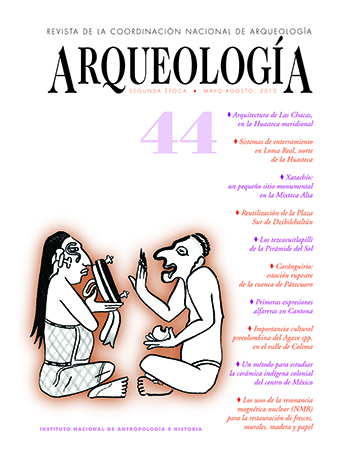Published 2010-08-01
How to Cite
Abstract
In the western region of Mesoamerica in Pre-Columbian times, the production of agave-based food and fermented alcoholic beverages was highly important in cultural and social terms. Agave distillation in Mexico is proposed to have begun in Colima in pre-Hispanic or early colonial times. Archaeological evidence is presented confirming the cultural and social significance of agave in the pre-Hispanic period, one of the fundamental conditions supporting the hypothesis of the Colima Valley as the origin of distillation. Evidence includes circular, subterranean ovens in residential and ceremonial contexts dating to the Classic and Postclassic periods (A.D. 200- 1500), probably used for preparing food, including agave. A Colima phase (A.D. 500-700) cemetery was excavated in which graves containing ceramic vessel offerings were found, including seven pieces with agave images. The association between agave-related offerings, the interred individuals and their graves suggests social differentiation and the evolution of mortuary rites between the Formative and Classic periods. The agave images indicate Agave angustifolia Haw. and A. maximiliana Baker were probably cultivated in the area. After contact, the cultural and social significance of the agave decreased in Colima, possibly as the result of a severe decline in the native population, changes in land use, and prohibitions against the production and sale of native alcoholic beverages.

